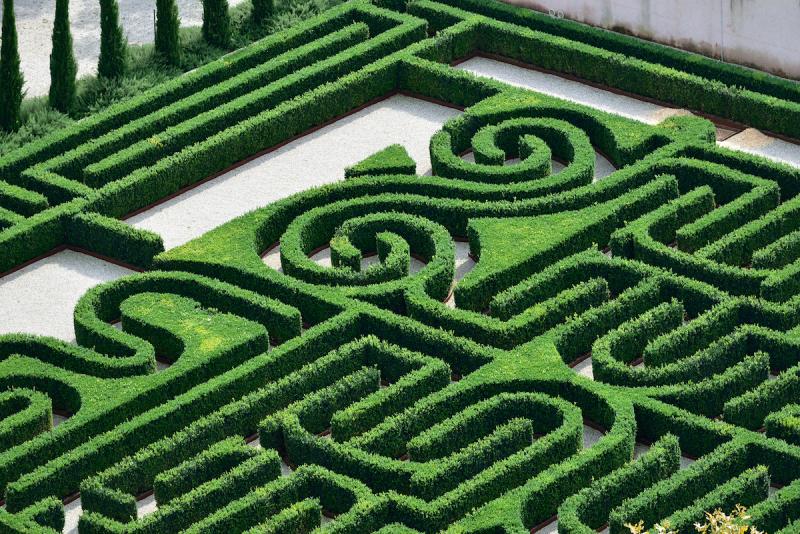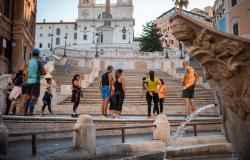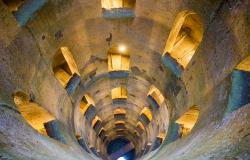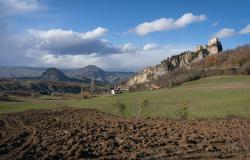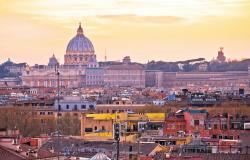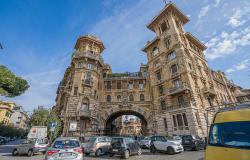Perhaps few symbols have crossed different places, eras, and cultures as the labyrinth has.
If the labyrinth had a mostly mystical meaning in the classical period and a magical, religious interpretation in the Middle Ages, from the mid-16th century it turned into a game that fit well with the atmosphere of the courts; later still, they became a decorative additions to the fanciful gardens of 16th- to 18th-century villas.
In Italy there are many labyrinths, some quite ancient, other more recent. They represent an ideal destination to immerse yourself in nature avoiding crowded places. Labyrinths are often a metaphor for growth, for an inner journey, for the complexity of our universe and our psyche. Here we take you on a journey through five fascinating labyrinths, where to wander, get lost and, perhaps, find yourself.
Labirinto della Masone - Fontanellato (Parma)

“The Labyrinth is a source of disturbance. It reflects the 'perplexed' experience we have of reality…” Franco Maria Ricci
In the Parmense countryside, the Masone Labyrinth, commissioned by the art publisher and editor Franco Maria Ricci, is the largest labyrinth in the world.
Inspired by the fortified city of Palmanova, it is built entirely of bamboo, a plant that absorbs large quantities of carbon dioxide. There are approximately 200,000 bamboo plants belonging to different species in the labyrinth, ranging between 30 centimeters and 15 meters in height.
“It is a maze for losing oneself in, for fantasizing and reflecting,” you read on the Masone Labyrinth website.
Only at the end of the labyrinth is it possible to access, symbolically purified, the Museum which houses the entire collection of the works of art Ricci collected in fifty years.
There is also a bistro where you can savor the local cuisine (this is the heart of Emilia-Romagna’s Food Valley), curated by the award-winning chef Spigaroli.
In the creation of the labyrinth, Ricci was inspired by his encounters with the 20th-century Argentine writer Jorge Luis Borges, who introduced the theme of the labyrinth in many of his works. It is no coincidence that several labyrinths around the world have been built in honor of him.
Which brings us to…
Labirinto Borges - Isola di San Giorgio (Venice)

On the Island of San Giorgio in Venice, the enchanting Borges Labyrinth, built in 2011, has recently opened to the public (on June 11, 2021, to mark the 25th anniversary of the death of Jorge Luis Borges).
Consisting entirely of box trees (3,200), the labyrinth is a tribute to the writer from Buenos Aires. The intricate labyrinth is inspired by Borges’ short story “The Garden of Forking Paths.” Along the path, there are objects representing symbols dear to Borges: mirrors, hourglasses and a huge question mark. The plants’ hedges are arranged in such a way as to form the name ‘Borges’ twice.
The labyrinth is meant to represent the inner bewilderment and feeling of being lost, typical of the 20th century, themes that Borges explored widely in his writings.
From the entrance, one cannot see the exit nor the path that winds through curves and narrow passages; and, as you keep going back and forth, you are caressed by tiny boxwood leaves, while you smell the scent of the earth and listen, via the audioguide, to a melody composed by Antonio Fresa performed with the Teatro della Fenice Orchestra.
The Borges Labyrinth was created by the Giorgio Cini Foundation at the behest of writer Maria Kodama, widow of Borges.
Labirinto di Valsanzibio - Galzignano Terme (Padova)
Italy is home to the oldest plant labyrinth in the world: the Valsanzibio Labyrinth, located near Padua.
Part of the larger Valsanzibio gardens of Villa Barbarigo, the labyrinth was built with 6,000 evergreen boxwood shrubs. Most of these plants are more 400 years old and were planted between 1664-1669 when the Valsanzibio gardens were created.
The Valsanzibio labyrinth retains a mysterious nature suited to Renaissance and Baroque monuments, and was built as a vow to God to put an end to the plague epidemic that ravaged the area at the time.
The labyrinth was originally designed as a symbolic path, a journey of redemption
that leads man from error to truth. Disoriented between high walls, you proceed, doubtful; each promising shortcut extends the journey or brings you to one of the seven dead ends, each representing one of the seven deadly sins. Once you have overcome those, you will reach the top of a tower, from where you will get, symbolically, a clearer vision of your life.
It’s a journey that starts at the Diana Pavilion, the spectacular monumental entrance that, up to the 19th century, could be reached by boat from Venice.
Once you reach the exit of the labyrinth, you can sit in the Hermit's Cave and meditate on what you have discovered during your walk in the labyrinth.
Villa Garzoni - Collodi (Florence)
Less mysterious but equally fascinating is the labyrinth in the historic garden of Villa Garzoni, in Collodi, where the father of the writer Carlo Lorenzini, the inventor of Pinocchio, worked.
The Italian garden is an 18th-century masterpiece that has been well preserved to these days; it has water features, large pools, bamboo groves and box hedges, artificial caves, statues, gargoyles and of course the Labyrinth, which, according to popular belief, brings luck to couples: it is said that walking hand in hand in the labyrinth ensures a long and happy love story!
The labyrinth is the only one that has survived in the villas of the area. Small and intimate, it has numerous crossroads, dead ends and false tracks in which it is easy to get lost - and have fun.
Castello di Donnafugata - Ragusa, Sicily

A labyrinth that amuses visitors and brings to mind the games played by nobles of an era now gone. It’s the labyrinth located inside the Donnafugata Castle, 15 kilometers from Ragusa in Sicily.
Made with dry stone walls and local white stone typical of the region, it features a stone soldier at the entrance.
Once covered with hedges and climbing roses to prevent passers-by from peering and to make the exit route more difficult, it looked quite different from how it does today. Nonetheless, it remains a thrill to walk through it and find the way out.
The labyrinth has a trapezoidal shape and it is no coincidence: the baron who owned the villa was inspired by the maze seen in Hampton Court near London during his travels.
Less than 20 kilometers from Ragusa, the Donnafugata castle is the sumptuous noble residence that rises around the labyrinth.
